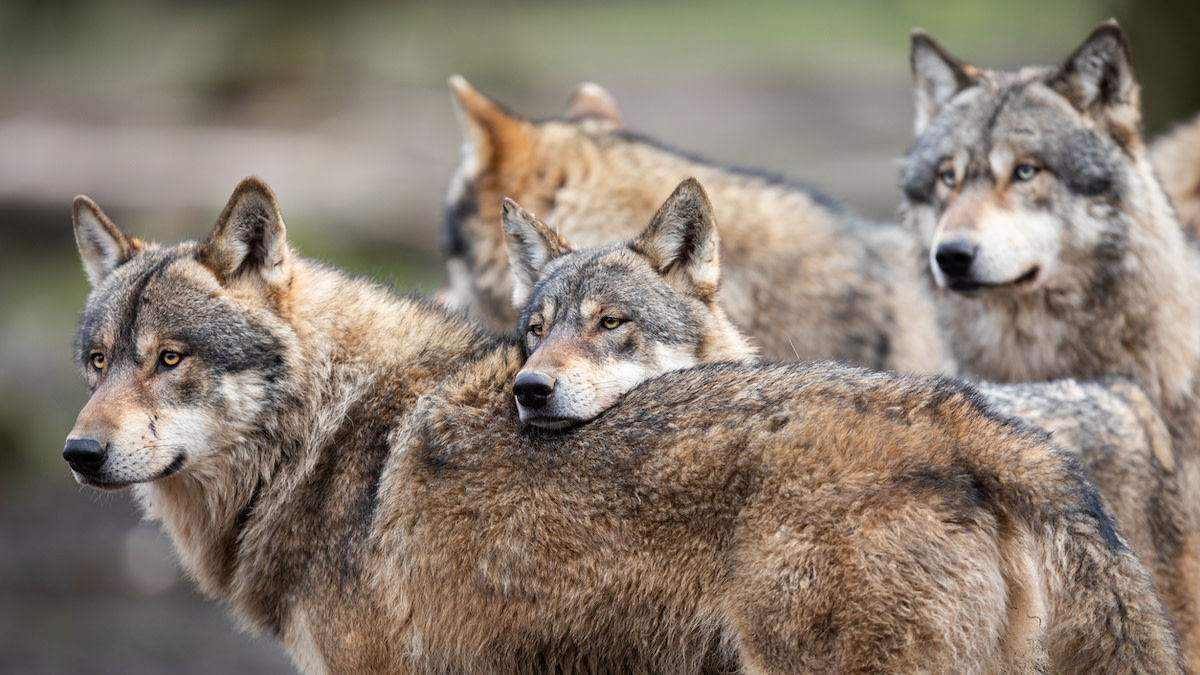How Colorado’s Wolf Reintroduction Nearly Failed Before It Even Started

Since Colorado voters (contentiously) approved wolf reintroductions in 2020, the state has been working to pave the way for paws on the ground. Last week, after a challenging search, Colorado Parks and Wildlife (CPW) secured a donor state in the nick of time for a December 31 reintroduction deadline: Oregon.
According to a press release, CPW will be responsible for the financial and logistical operations of all captures, which are set to begin in December. The one-year agreement allows Colorado to remove 10 wolves from the northeast corner of the state, where they “will not impact any conservation goals.”
Oregon Department of Fish and Wildlife Director, Curt Melcher, cites reciprocity as a driving factor in the agreement: “Oregon has a long history of helping other states meet their conservation goals by providing animals for translocation efforts. Some of our wildlife populations were also restored thanks to other states doing the same for us, including Rocky Mountain elk, bighorn sheep and Rocky Mountain goat.”
The deal solves Colorado’s immediate problem but doesn’t address its long-term goal: introducing five to ten wolves annually for the next three to six years.
A Tenuous Search
Not all states expressed such a collaborative sentiment as Oregon did. In fact, most went the opposite direction. When CPW began the search for wolves last spring, they sent formal requests to Washington, Montana, Oregon, and Idaho—as advised by a technical working group.
Idaho immediately denied the request. In a letter to CPW, Idaho Department of Fish and Game director Jim Fredricks wrote, “After giving the potential effects of your request careful consideration and conferring with [the governor], I respectfully decline the request to use Idaho wolves as a source for translocation to Colorado. Idaho’s experience leads us to conclude that negative impacts of wolves sent to Colorado will not stay in Colorado.”
In the letter, Fredricks goes on to express concern that the state is unable to manage their own wolf population appropriately, due to litigation and interference from the US Fish and Wildlife Service. Specifically, he’s referring to the fact that Idaho’s Northern Rockies wolf population met the criteria for delisting under the Endangered Species Act years before they were actually delisted in 2011. And even then, it was through a rider on a federal spending bill. Since 2011, the state has been struggling to keep populations in check and recently approved even more drastic measures such as expanded means of take and hunter reimbursement programs.
“Idaho is concerned with expanding the scope of our potential biological and social conflicts regarding wolves rather than reducing them,” Fredricks said. In short, Idaho doesn’t want to endorse wolves in another state.
Wyoming also indicated that it wouldn’t give wolves to Colorado before they were even asked. “Wyoming is opposed to sending Wyoming wolves to Colorado because we carefully and scientifically manage our wolf population,” Governor Mark Gordon told a local news channel in May. “We have target population numbers, and reducing those numbers to support a translocation in Colorado may jeopardize those successful management plans.”
In August, Montana also declined to donate wolves for the reintroduction. That left only Washington and Oregon as potential candidates. Wildlife officials in Washington, however, indicated that they might be willing to provide animals, but wouldn’t be able to capture wolves until January or February when snowpack makes it easier to track and capture wolves. That would’ve put Colorado behind schedule for the December 31 deadline.
Fortunately for Colorado, Oregon came to the rescue with less than two months to go.
A Crucial Piece of the Puzzle
Another crucial piece of Colorado’s wolf puzzle came into place recently when the U.S. Fish and Wildlife Service approved the state’s request to introduce wolves as a 10(j) “experimental” population. This designation under the Endangered Species Act gives the state greater flexibility to manage the species, specifically as it relates to lethal control.
In April, Colorado legislators almost passed a bill (SB23-256) mandating that Colorado’s population be deemed experimental before wolves even hit the ground. The bill flew through the state senate and house, but was vetoed by Governor Jared Polis. In the veto letter, Polis wrote:
“SB23-256… is unnecessary and undermines the voters’ intent and the hard work of the Parks and Wildlife Commission, the expertise of the Colorado Parks and Wildlife staff, the extensive stakeholding undertaken by [working and advisory groups], and the ongoing collaborative work with our Federal partners, and could actually interfere with successfully receiving experimental population designation, which is the purported purpose of the bill.”
But Coloradans in support of the bill shouldn’t have feared. On September 15, the US Fish and Wildlife Service published an Environmental Impact Statement for the wolf reintroduction program, in which they granted 10(j) experimental status to the future Colorado population. Notably, however, the ruling applies to “any gray wolf living in, dispersing into, or reintroduced to the state,” meaning wild populations already spilling over from Wyoming are included in the listing.
The ruling will give ranchers and farmers more leeway to kill problem wolves without repercussions. It’s just one step in the long process of reintroducing wolves to the Colorado landscape. We’ll continue with updates as the effort plays out.






Conversation